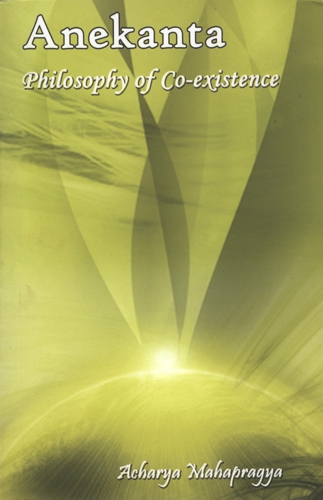Chapter 10

Non-Dualism and Dualism
Key-Words
Akash | - | Space |
Atma | - | Soul |
Atmadvaitavadi | - | Philosophers believe in monism based on the soul |
Chaitanya-dvaitavad | - | Duality of consciousness |
Charamadeha | - | The last embodiment of the soul |
Gyanavarniya | - | Knowledge obscuring karma |
Jadaadvaitavadi | - | Non-sentience |
Kevali | - | Omniscient |
Maya | - | Illusion |
Mool atma | - | the Soul |
Naishchiyik naya | - | Transcendental viewpoint |
Samyag-gyan | - | Right Knowledge, |
Samyag darshan | - | Right Belief |
Sopakrama | - | Life span vulnerable to external effect |
| Jain philosophy is dualistic and monistic both. It has defined creation as the co-ordinate action of both the sentient and the insentient. According to it only the soul or only pudgal cannot make things happen. Their coordinated action makes creation. It explained the world on the basis of Anekānta. With the acceptance of the co-existence of opposing pairs, Jain philosophy has acquired a holistic perspective. It does not look at any stream of thought as false but as relative truth. In the language of Anekānta this is the truth of collective perspective. Only one perspective is not valid. Jain philosophy accepts the independent existence of the soul or element of consciousness. But is does not deny the existence of the non-sentient. This approach makes Jain philosophy dualistic as well as non-dualistic. |
Non-Dualism and Dualism
Men are conscious beings and therefore they can think and perceive. A human being uses his mind to think and enter into the deep recesses of the mind to perceive. Truth has been sought through reflection, meditation and perception. Consciousness develops in the context of society. Man began living in society and then he searched for truth with a sense of urgency. He wondered, what are the mountains? What are the rivers? What are the objects that are visible to the eyes? Is that all or are there more? Are they created or are they self born? Who creates them? If there is someone who does, then do we know that being? Such questions arose in the minds of people and they began to spend time and effort to find the answers. This chain of events led to the development of perception and thoughts. Perception and thoughts are based on philosophy. Philosophy was not created, it evolved. When I see something the perception of other person about this is not a binding on me. It depends on that other person. What I perceive with my intuitive perception, I try to articulate with logic. If the other person accepts the logical account of my experience then our thoughts become one. Logic serves to bring people together. Intuitive perception is personal while logic is the binding principle. Logic is the one that puts together similarities in thoughts. This way intuitive perception and logic together form the fundamentals of philosophy. The palace of philosophy stands on these two pillars.
 Acharya Mahaprajna
Acharya Mahaprajna

